
Route Map for Part 4:
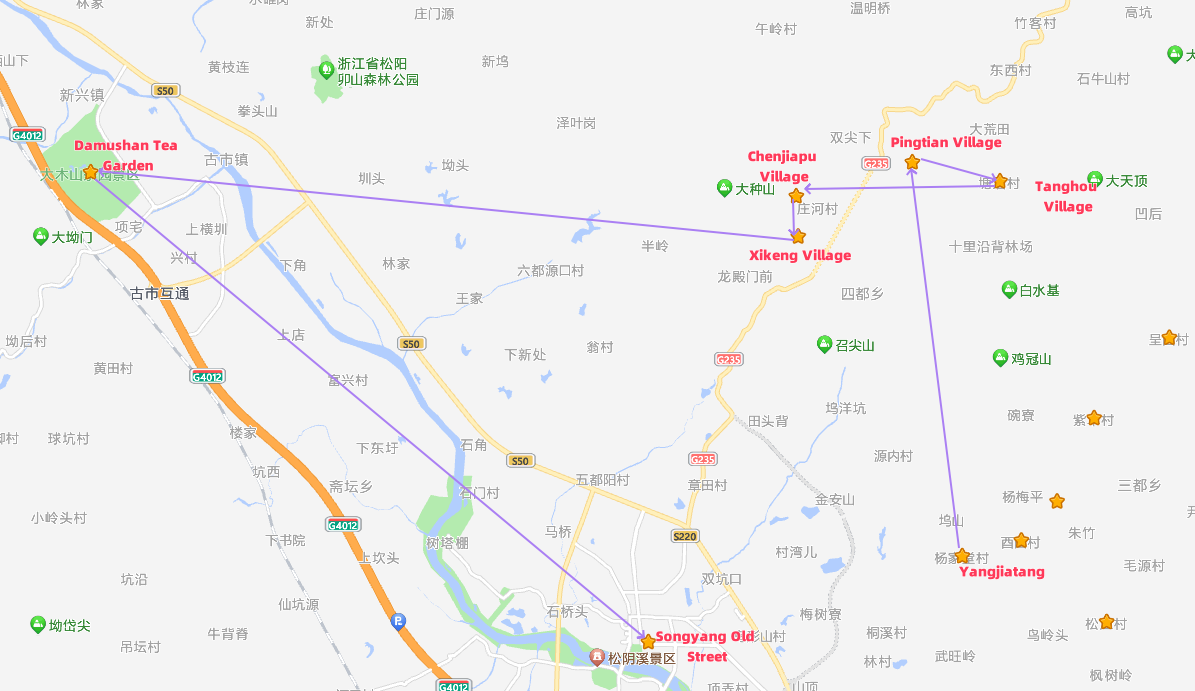
October 31st, Yangjiatang - Pingtian Village - Tanghou Village - Chenjiapu Village - Xikeng Village - Damushan Tea Garden - Songyang Old Street
After breakfast, our first stop was Pingtian Village. Compared to the villages we visited yesterday, I personally didn't find it particularly impressive or astonishing. Pingtian Village is located on a hillside at an altitude of over 600 meters, hence it is called "Pingtian on the Clouds." Since Pingtian Village is not far from the internet-famous Chenjiapu Village, it has also benefited from the dividends of tourism. In recent years, due to the development of tourism, this small village has seen the construction of guesthouses, cafes, archery ranges, tie-dye workshops, and more. On the day we visited, there were construction sites in the village. We took a brief walk around and encountered several groups of domestic tourists who came to visit its fame. However, because the weather was exceptionally clear, we didn't get to see the village enveloped in clouds as its name suggests.
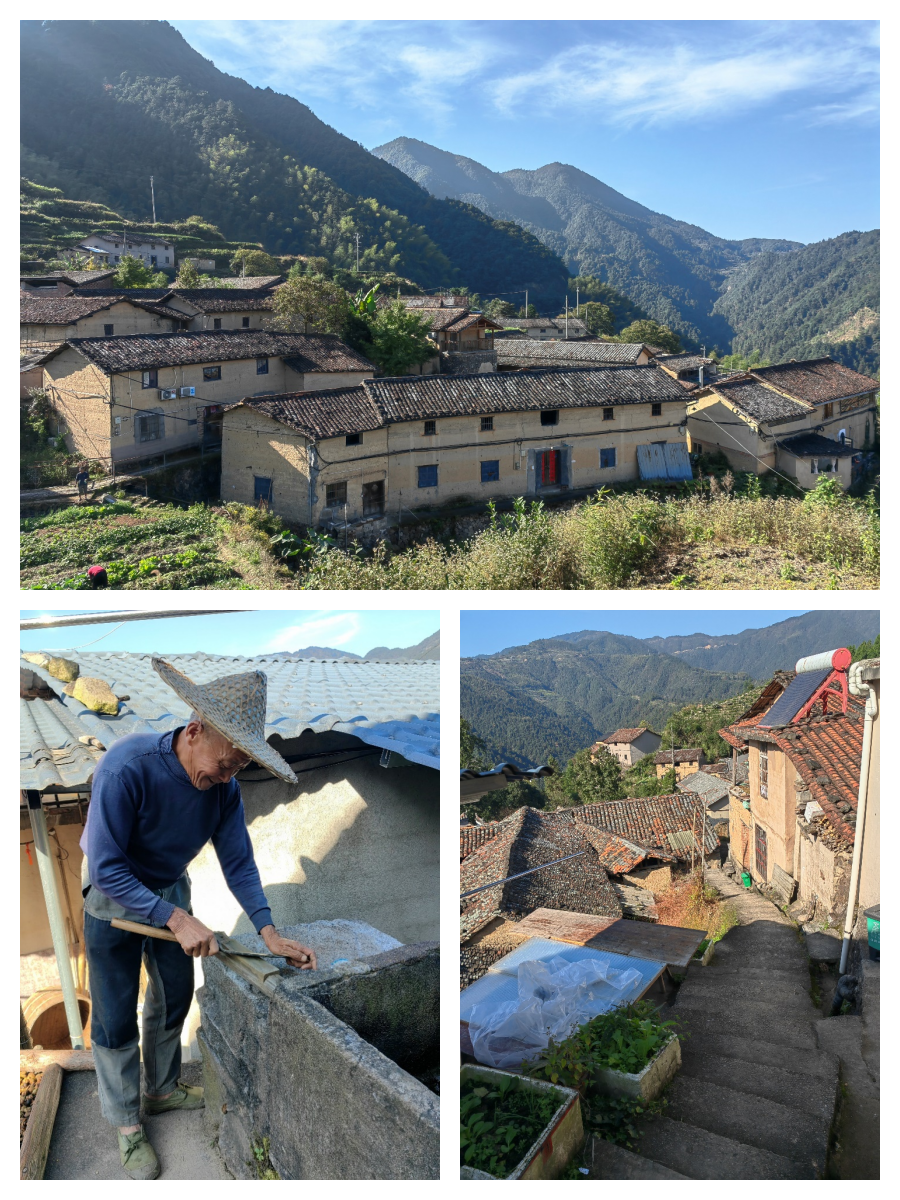
Continuing along the mountain road deeper into the mountains, we discovered another hidden ancient village, Tanghou Village. Situated on a hillside at an altitude of over 700 meters, Tanghou Village boasts beautiful scenery with ancient trees, wells, waterfalls, and a rich array of wildlife and plant life. The village's architecture mainly consists of traditional courtyard houses, and the mountain spring water is so clear it can be drunk directly. Due to its high geographic location, the village's residents are primarily elderly, with fewer young people. The majority of Tanghou Village's residents have the surname Chen, whose ancestors migrated here during the Southern Song Dynasty, and the Chen ancestral hall is still preserved to this day. The couplets outside the hall reflect the village's founding principles, emphasizing the virtues of the ancestors and the spirit of humanism.
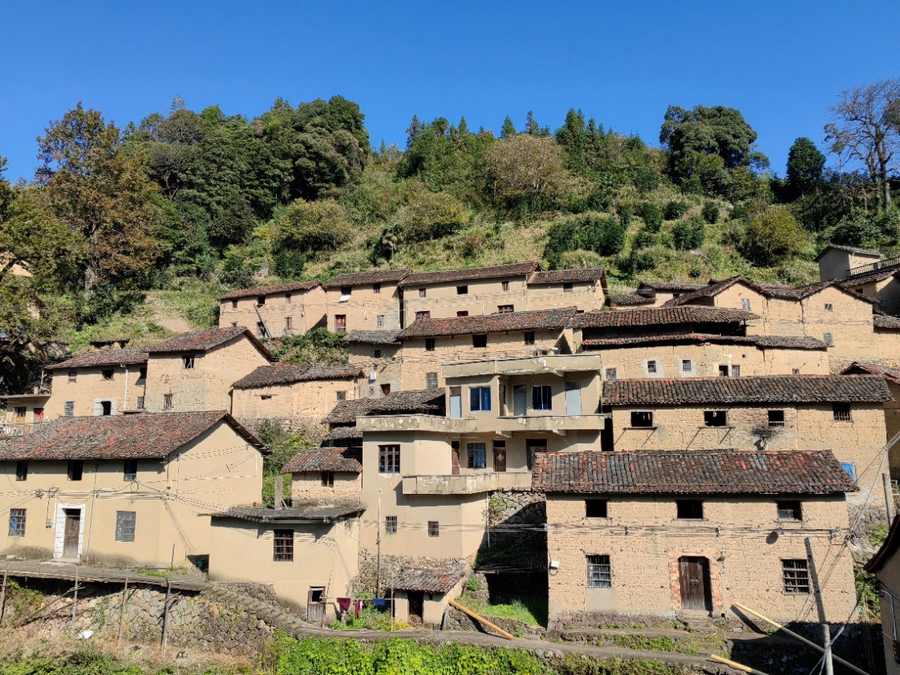
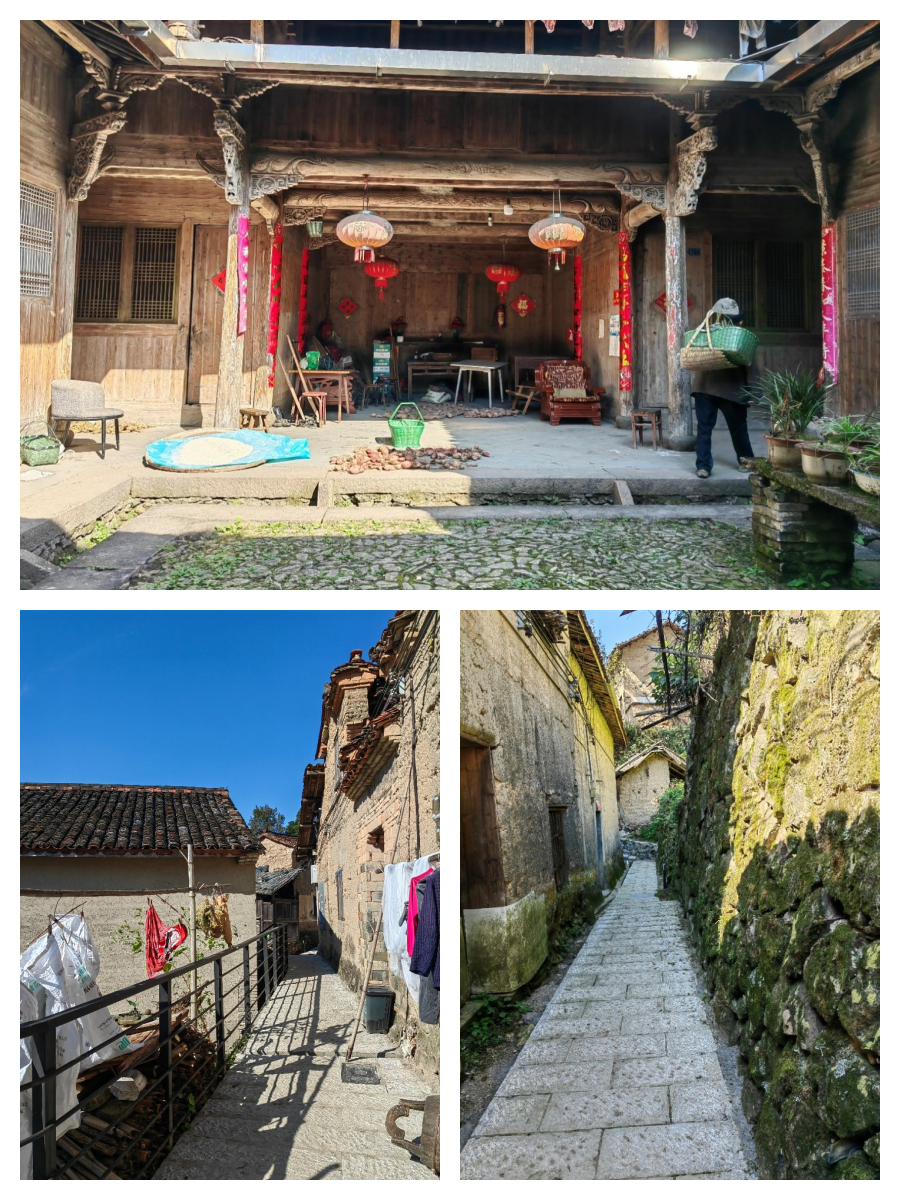
By noon, we finally arrived at Chenjiapu Village, the most famous and photographed village in Songyang County online. Even before entering the village, we noticed an increase in vehicles, and upon reaching their dedicated parking lot, which was not large, it was almost full. There were many more people along the roads, and a variety of small shops had sprung up, a sight we hadn't seen in any of the previous villages.

Chenjiapu Village is located in Sidu Town, and is an ancient village with a history of over 600 years. The village is situated on the Zhaitouling, about 18 kilometers from the county and at an altitude of about 850 meters. The village got its name from the Chen ancestors who built a lime kiln here to raise ducks, and later the Bao ancestors migrated here from Wuyi County, becoming the main surname in the village. The buildings in Chenjiapu Village are built against the mountain, creating a unique "cliff dwelling" landscape, earning it the nickname "Little Potala Palace." The village retains a wealth of historical environmental elements such as ancestral halls, incense halls, community temples, ancient dwellings, old shops, ancient roads, and post stations. The natural scenery surrounding the village is also very charming, with more than 80 ancient and famous trees, as well as 7005 acres of mountainous area and 415 acres of arable land.
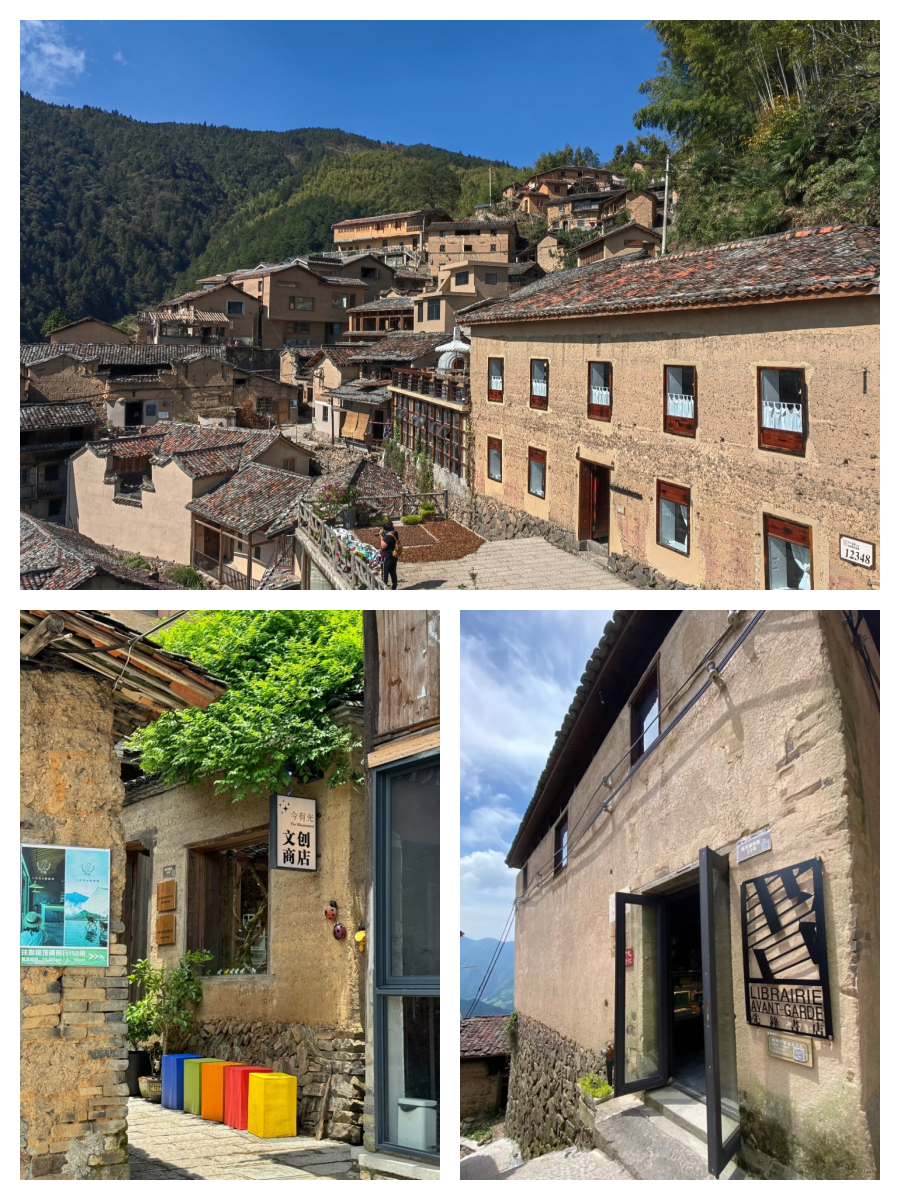
In 2014, Chenjiapu Village was listed in the third batch of Traditional Chinese Villages (中国传统村落名录). With the increase in popularity, the village began to develop its homestay industry and gradually renovated old houses, introducing new businesses such as coffee bars, bookstores, and tea houses, giving the old buildings a new lease on life. It is particularly worth mentioning that the village's Xianfeng Bookstore, known as the "most beautiful bookstore on the cliff," has become a must-visit spot for tourists. Today, Chenjiapu Village has become a vibrant and energetic tourist village.
When leaving Chenjiapu Village, we noticed that the parking lot was completely full, and the road out of the village was lined with parked cars on one side. Traffic police had already begun to maintain order, indicating that during the peak season, the village is essentially in a state of being unable to enter or leave, not to mention on holidays. In short, I would advise everyone to avoid the summer vacation, all holidays, and even weekends.
While everyone was flocking to Chenjiapu Village, we headed straight to Xikeng Village. Located in Sidu town, Xikeng Village is an ancient village with a long history and rich culture. The village is about 14 kilometers away from the county town of Songyang and got its name because it is located on a western tributary of the Sifang River. Xikeng Village is known for its unique geographical location, abundant meteorological resources, and well-preserved ancient residential buildings. The ancient residential buildings in Xikeng Village are well-preserved, with 21 Qing Dynasty houses, ancestral halls, community temples, and incense halls, as well as more than 40 houses from the Republic of China period to the 1970s. The traditional appearance and historical layout of the village have been well protected, with exquisite architectural layout and unique style. The village maintains good customs and a peaceful life for its residents, making the village full of vitality and spirit.
Compared to Chenjiapu Village, the commercial atmosphere here is lighter, but it is much more developed than in Tanghou Village. After all, there are popular restaurants and trendy guesthouses here. However, since our visit was not during the peak season or perhaps not at the right time, we did not see a bustling crowd.

We then proceeded to the Damushan Tea Garden in Songyang, where there were still few tourists. We rented bicycles and cycled around the tea garden. The sight of the lush greenery was very pleasing to the eye and refreshing to the mind.
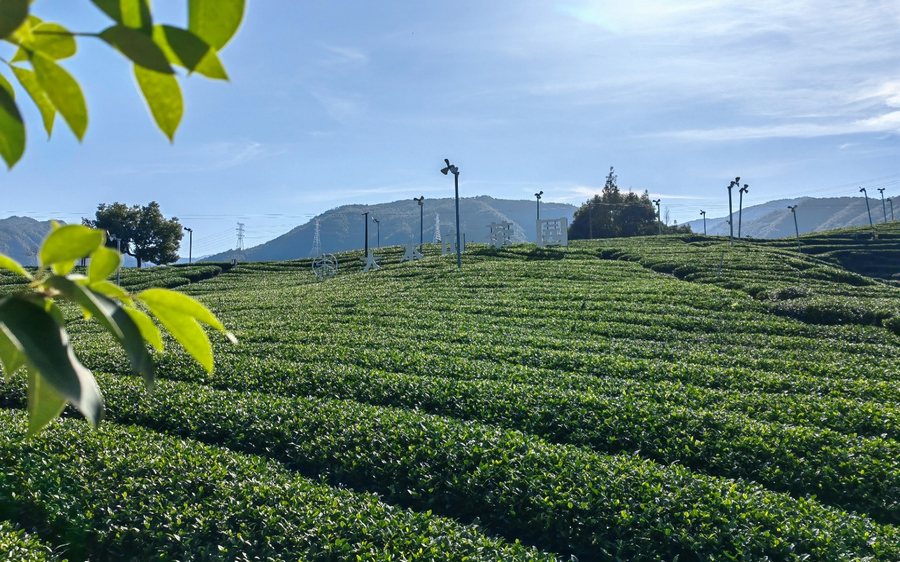
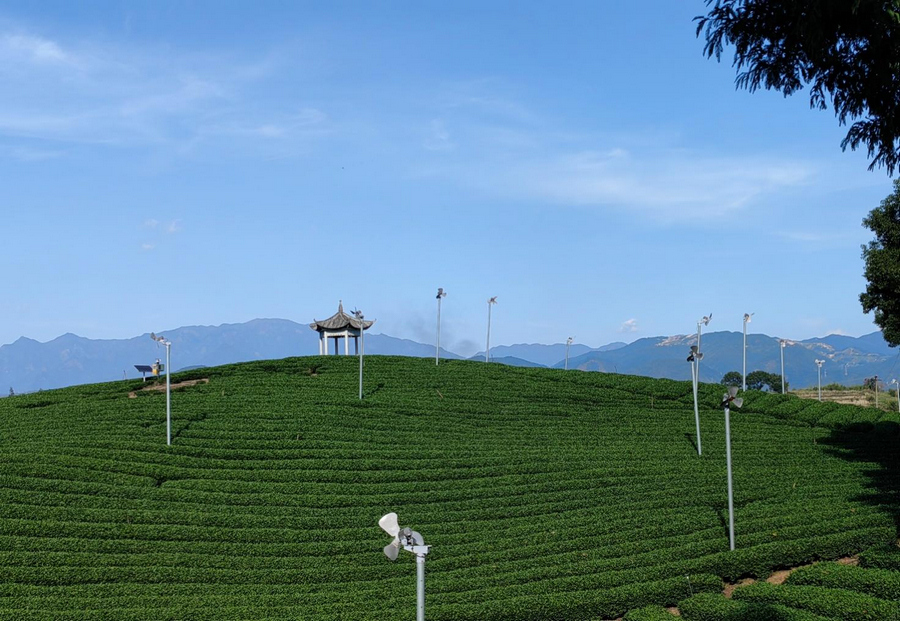
After concluding our bicycle tour at Damushan Tea Garden, we headed straight to Songyang County and chose a hotel located in the old street area. Initially, we didn't have high expectations, thinking it would be just another commercial street without any particular charm. I particularly love ancient cities because every brick and tile has a story to tell. I am especially fond of the old streets in ancient cities, where every corner is etched with historical marks. Strolling aimlessly along the old streets, tasting local delicacies in shops frequented by residents, experiencing the passage of time in historically rich buildings, and listening to locals recount tales of the past always make a journey particularly interesting. However, the excessive commercialization of many ancient cities and old streets in the country has been diluting my unique affection for them, as every street is filled with vendors from all over.
Thus, we didn't have high expectations for the old street, assuming it would be just another rebuilt old street with a heavy commercial atmosphere. However, to our surprise, this street gave us a great delight.
Upon arrival, we found that Songyang Old Stree was not at all what we had anticipated. It was not merely a commercialized area but a place where the past and present intertwined in a unique way. The old street was alive with a charm that was unexpected, and it turned out to be one of the highlights of our trip. It was a place where the essence of the ancient city was preserved, not just in its architecture but also in the daily life of its residents. The old street turned out to be a delightful surprise, a place where history comes alive and where the commercial activities complement rather than overshadow the cultural heritage. It was a refreshing change from the heavily commercialized old streets we had experienced elsewhere, and it reignited our passion for exploring the historical quarters of ancient towns.

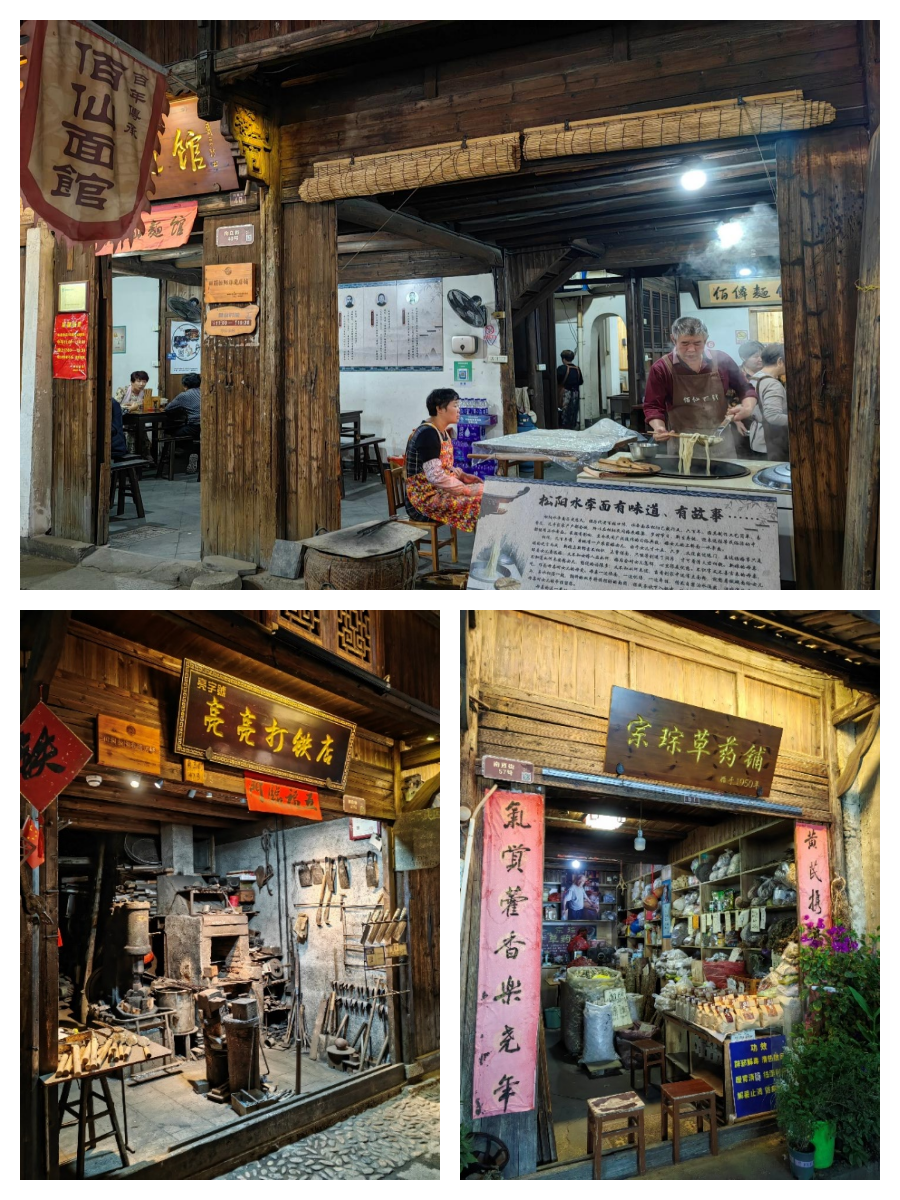
Songyang Old Street, located in Songyang County, is known as the "Living Riverside Scene at Qingming Festival " and is hailed as the "Last Secret Wonderland of Jiangnan." Songyang was established as a county during the Eastern Han Dynasty in the fourth year of Jian'an, with a history of over 1800 years. Since the Tang Dynasty's Zhenyuan era, the county town has been settled in Xi Ping Town, which also has a history of more than 1200 years. The core of the ancient market and old city is now what we call Songyang Old Street. This ancient street is only over 300 meters long but is lined with small shops, famous stores, and time-honored brands. Strolling along, one can indulge in eating and drinking, and time passes by unnoticed in a couple of hours. Most of the buildings on both sides of the old street are two-story wooden structures, mainly dating back to the Ming and Qing dynasties. Along the street, there are blacksmith shops, herbal medicine stores, tailor shops, fabric stores, antique shops, and even cotton-picking old stores. Some of these businesses have disappeared elsewhere but have survived well here. Visiting these places gives a surreal feeling, as if time has reversed. Unlike many ancient counties that have city walls, Songyang Ancient City does not have any, making it quite unique among the ancient counties in China. Having visited many famous old streets in ancient cities, one often finds them packed with tourists, selling similar items, and run by business owners from all over the country. In Songyang Old Street, however, we mostly heard local accents, and the shop owners were almost always the proprietors themselves, preserving a more authentic and local flavor.
On the old street, we observed a very interesting scene: barbershops of all sizes were scattered in every direction and corner of the street. You could even find three different barbershops within a distance of 50 meters, truly one after another. This is almost impossible to find elsewhere, as competition is usually too fierce. We chatted with the locals, and they told us that each shop has its own regular customers, so there is no unfair competition. As for why there are so many old-style barbershops, they said it's because they serve the original residents living on the old street. Haircut prices in other parts of the county town can be tens or even hundreds of times higher, so the local residents prefer to come here where the prices are less than a quarter of those in the county town. Moreover, the barbers in these old-style shops are all highly skilled. The shops are not large, and even if they are not the owners' own houses, the rent is not high.
For the weary traveler, taking a brief respite here and truly integrating into the life of the old street, feeling the beauty it brings, is truly delightful.
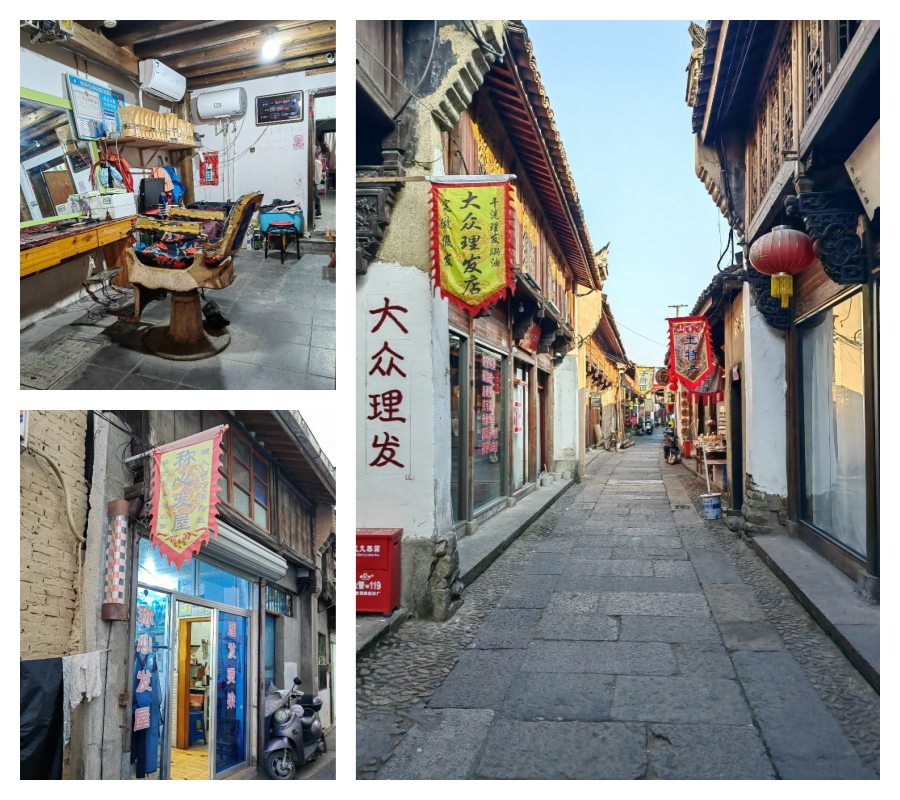
Yours Truly
Leena Li - Charmission Travel
